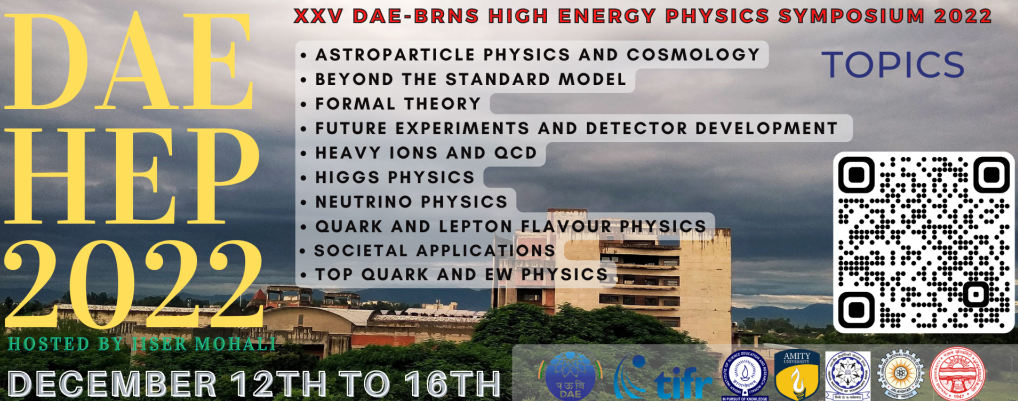Speaker
Description
Abstract: The Compressed Baryonic Matter (CBM) experiment at the Facility for Antiproton and Ion Research (FAIR)[1] accelerator complex in Darmstadt, Germany, aims to examine the QCD phase diagram in the area of high net baryon densities using N-N collision. The SIS-100 accelerator ring will produce accelerated beams in the initial phase of FAIR up to the energies of about 30 GeV for protons, 12A GeV for heavy ions, and 15A GeV for light ions. The detection of di-muons created in high-energy heavy-ion collisions in the beam energy range of 4A to 12A GeV is one of the significant physics observables at SIS100. The Muon Chamber (MuCh) system [2][3] is designed to identify muon pairs that are produced in high-energy heavy-ion collisions in the beam energy range from 4 to 40A GeV[4]. We will report our present simulation results for the reconstruction of omega mesons in central Au+Au collisions at the beam energy 8A GeV using the Muon Chamber (MuCh) detector system. As a signal, we considered the ω (ω → μ + μ− ) meson, generated by the PLUTO [5] event generator and embedded into background events generated with UrQMD [6] event generator. The signal-to-background ratio (S/B) and reconstruction efficiency (ϵω) have been computed. The efficiency correction and the invariant mass spectra of the omega meson have also been determined and will be presented in detail.
References:
1. FAIR: M. Durante et. al., Phys. Scr. 94 (2019) 033001
2. MuCh detector system: Muon Chamber (MuCh) Technical Design Report (TDR),
3. O. Singh et al., CBM Progress Report 2018.
4. CBM Collaboration, Eds. S. Chattopadhyay et. al., GSI-2015-02580.
5. PLUTO: I. Frohlich et. al.,PoS ACAT (2007) 076, arXiv:0708.2382 [nucl-ex].
6. UrQMD: S.A. Bass et al., Prog. Part. Nucl. Phys. 41 (1998) 255.
| Session | Heavy Ions and QCD |
|---|
